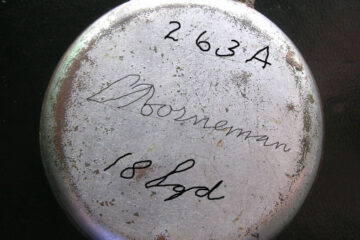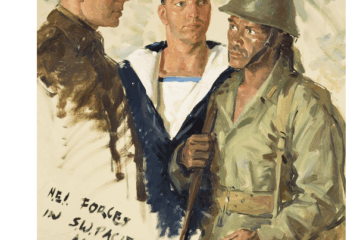In early 1942, as Japanese forces overran the Netherlands East Indies (NEI), Dutch authorities faced the urgent task of preserving their financial and sovereign assets. Among the most critical was the colony’s reserve of gold bullion—essential not just for wartime logistics, but for sustaining the legitimacy of the Dutch government-in-exile and its NEI administration now scattered across the globe. What followed was a daring, little-known evacuation known as Operation Accountant, which saw the transfer of tonnes of gold to Australia under immense logistical, political, and military pressure.
A collapsing front and desperate measures
By early March 1942, Japanese advances had broken Dutch defences in Java. Amidst this collapse, the Dutch prepared to evacuate high-level government officials, intelligence staff, and precious cargo from Java’s southern coast. Alongside the NEI’s civil and military elite, large quantities of gold bars, coins, and securities were loaded onto merchant vessels and smaller coastal ships, bound for ports in northern and eastern Australia.
The operation was led by Rear-Admiral Frederik Willem Coster, with coordination from Lieutenant-Governor-General Hubertus van Mook and senior Dutch bankers and treasury officials. Several vessels, including the Generaal Verspijck and Zaandam, were involved in this transfer. Some ships carried the gold openly; others used coded documentation or concealed the bullion in sealed crates.
Arrival in Australia
Much of the gold was landed at Darwin, Fremantle, and Sydney, with final storage often arranged in Melbourne under joint Dutch–Australian security arrangements. Some of it was shipped overland to inland vaults or transferred to temporary custody of the Commonwealth Bank.
The precise amount of gold transferred has never been officially published, but contemporary records suggest up to 80 tonnes of bullion were secured this way. Additional reserves were transferred later from Ceylon and South Africa.
Financial lifeline and political implications
This gold played a vital role in financing the Dutch war effort from exile. It allowed the Netherlands Indies Commission in Australia to pay for military supplies, ship maintenance, food and fuel purchases, and the salaries of NEI civil and military staff stationed across the Pacific. It also gave the exiled Dutch government bargaining power in Allied financial and diplomatic discussions.
However, the operation also exposed tensions between the Netherlands and Australia. The custodianship and control over the gold became a sensitive issue, particularly when it became clear that the Dutch were hoping to retain full financial sovereignty in exile, while Australia—only just beginning to assert its own foreign policy—sought greater oversight over foreign currencies and wartime economic arrangements. According to Jack Ford in Allies in a Bind, some Australian officials were suspicious of Dutch intentions and pressed for temporary Commonwealth oversight of the bullion.
A quiet success with lasting legacy
Despite the logistical complexity and political strain, Operation Accountant succeeded. The gold remained secure throughout the war and was never lost to enemy action or misappropriation. After the war, much of it was repatriated to the Netherlands or used in postwar reconstruction, while a portion continued to fund the ongoing administration of Dutch forces during the Indonesian independence conflict.
Today, the episode is rarely mentioned in official accounts, but it represents a fascinating moment of financial diplomacy and wartime improvisation. The successful transfer and protection of Dutch gold in Australia is a reminder of how global the Pacific War truly was—and how Australia’s role as a refuge and partner extended well beyond the battlefield.
Related articles
- The Dutch purchasing mission and wartime supply issues in Australia
- From indifference to diplomacy: how the war transformed Dutch–Australian foreign relations
- A Dutch military and civil inventory in Australia – March 1942 snapshot
- The NEI Government in exile: rebuilding governance from Brisbane and Melbourne
Sources
Jack Ford, Allies in a Bind: Australia and the Netherlands East Indies in the Second World War, CQU Press, 2001


